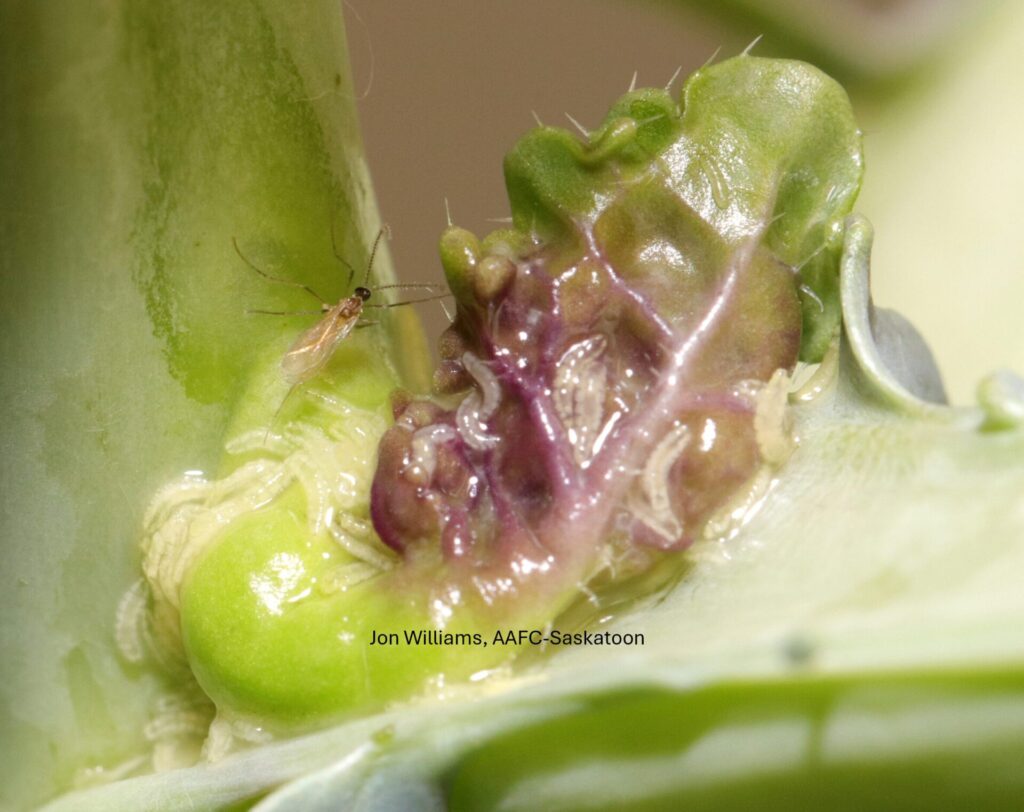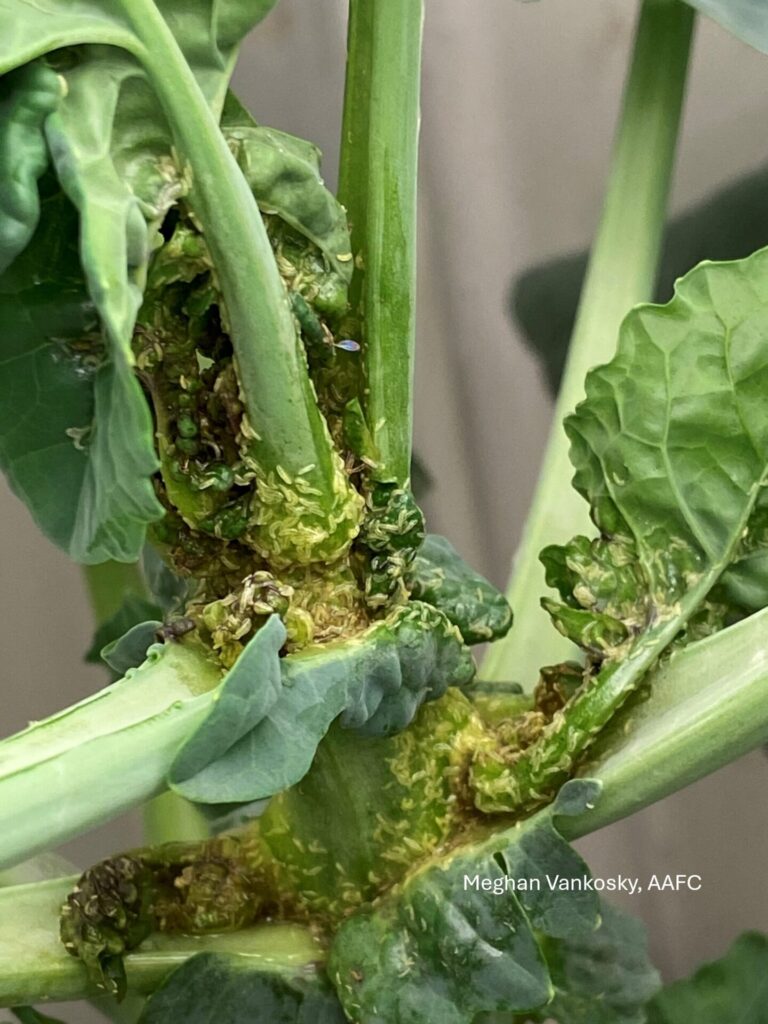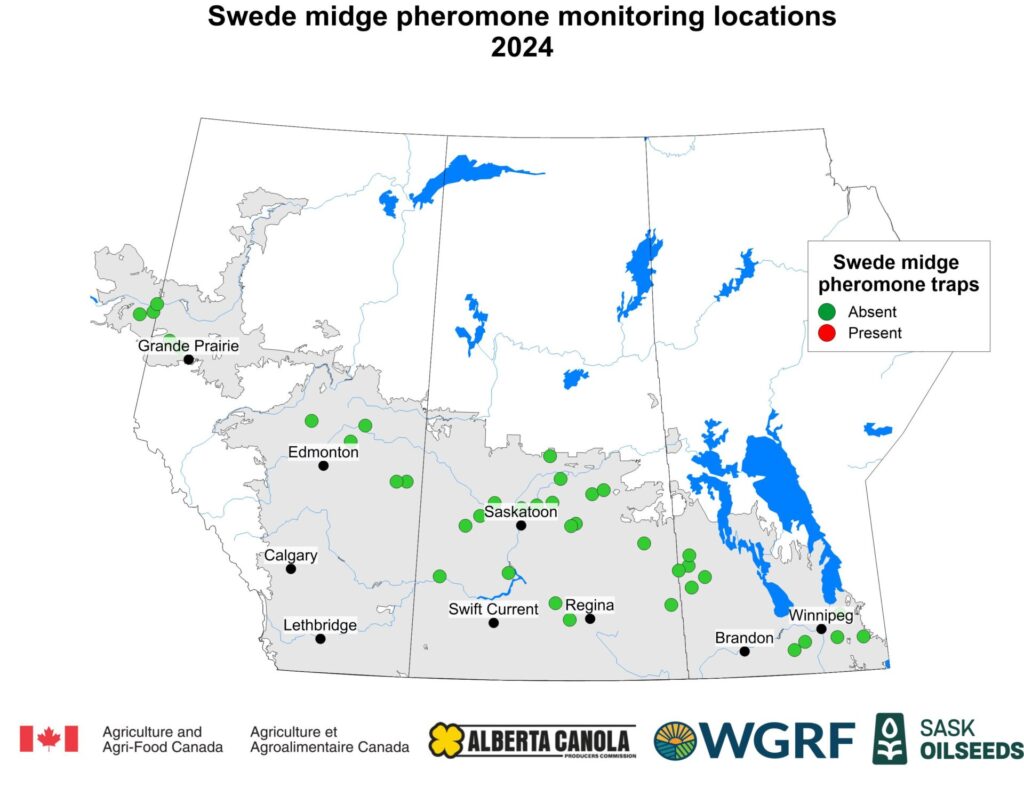Swede midge, Contarinia nasturtii, is an invasive species in Canada and the United States. Swede midge has been detected by the CFIA in Saskatchewan and Manitoba, but is NOT ESTABLISHED IN THE PRAIRIE REGION and has not been detected in pheromone traps used for monitoring since the CFIA detections in 2007/2008. Swede midge has been found in New Brunswick, Nova Scotia, Prince Edward Island, Ontario, and Quebec. It is well-established in Ontario and Quebec, where it has been extremely damaging to brassica vegetable crops (cabbage, broccoli, kale, cauliflower, etc.) and canola crops.
Swede midge has been found in at least 12 states in the northeastern region of the United States (e.g., Vermont, New York). It has recently been found in Michigan, Wisconsin and Minnesota.

Swede Midge Identification and Life History: Adult swede midge are small, grey or brown coloured flies, about 2 mm long. Adults lay eggs on the growing points of their brassicaceous host plants and larval development prevents normal plant development.

Larvae are 2-4 mm long and yellow-coloured when ready to pupate; early instar larvae are smaller and are often translucent. Once larval development is complete, larvae drop to the soil to pupate. There can be multiple generations per growing season. Swede midge can also remain in the pupal stage in the soil for over a year if soil and temperature conditions are not suitable for adult emergence.

Swede Midge Monitoring: Pheromone-baited traps are used to monitor for swede midge in Manitoba, Saskatchewan, Alberta, and the Peace River Region of BC. This monitoring program is primarily in place as an early detection system. So far, no swede midge have been caught in pheromone traps set up in the prairie provinces. Results from the 2024 monitoring season are shown below.

As swede midge are moving westward in the United States, it is important to keep monitoring for swede midge in an effort to protect the prairie canola and vegetable industries from this potentially devastating pest.
For more information about swede midge visit:
- The swede midge page in Field Crop and Forage Pests and Their Natural Enemies in Western Canada (English or French)
- Previous Insect of the Week articles (2021, 2024) and swede midge monitoring protocol from the Prairie Pest Monitoring Network
- Canola Council of Canada Encyclopedia swede midge article
- Ontario Ministry of Agriculture, Food and Agribusiness swede midge webpage
